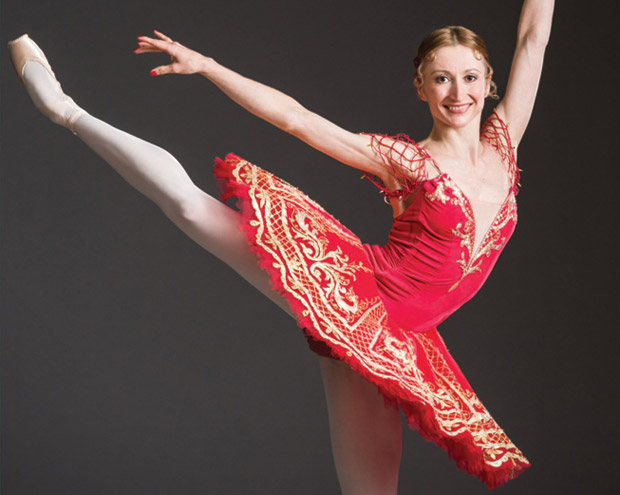
© Metro Books. (Click image for larger version)
Daria Klimentova – Agony and Ecstasy: My Life in Dance
by Daria Klimentova with Graham Watts
Hardcover: 288 pages
Metro Books, London
4 Mar 2013, 288 pages, illus. £20.00
publishers page
order from Amazon
dariaklimentova.com
English National Ballet website: www.ballet.org.uk
“I’ll hold out till I’m 35,” stated Daria Klimentova in an interview with a Czech journalist when she was thirty-three. This June, the ballerina will celebrate her 42nd birthday, and is still dancing beautifully, with no immediate plans for stopping. Like Margot Fonteyn, she was given a new lease of life when she was presented with a young Russian partner as she approached the expected end of her illustrious career. For Fonteyn it was the charismatic Nureyev, for Klimentova, it is the elegant and graceful Muntagirov, who like Nureyev, is nineteen years his partner’s junior. Last December the couple danced their 100th performance together.

© Dave Morgan. (Click image for larger version)
In moments away from the stage, Daria has found time to write her autobiography (in collaboration with Graham Watts) – Daria Klimentova: Agony and Ecstasy: My Life in Dance – in which, with frankness and often humour, she details her upbringing and career. For someone who admits that she was ‘a quiet and phlegmatic little girl who kept everything bottled up inside,’ she has done a grand job in uncorking that bottle, and writes with openness and honesty about everything. She doesn’t shy away from mentioning the challenges she has faced in her professional life, nor who or what caused her grief, – and she has had her fair share of battles to face. From the earliest age she preferred solitude to socialising, and states that she didn’t cry until ‘I was 15’, and, being reticent, she had to be taught how to smile. She did things because they were expected of her, not always because she enjoyed them, and it was to please others that she started, and continued, her dance classes – thankfully for the ballet world.
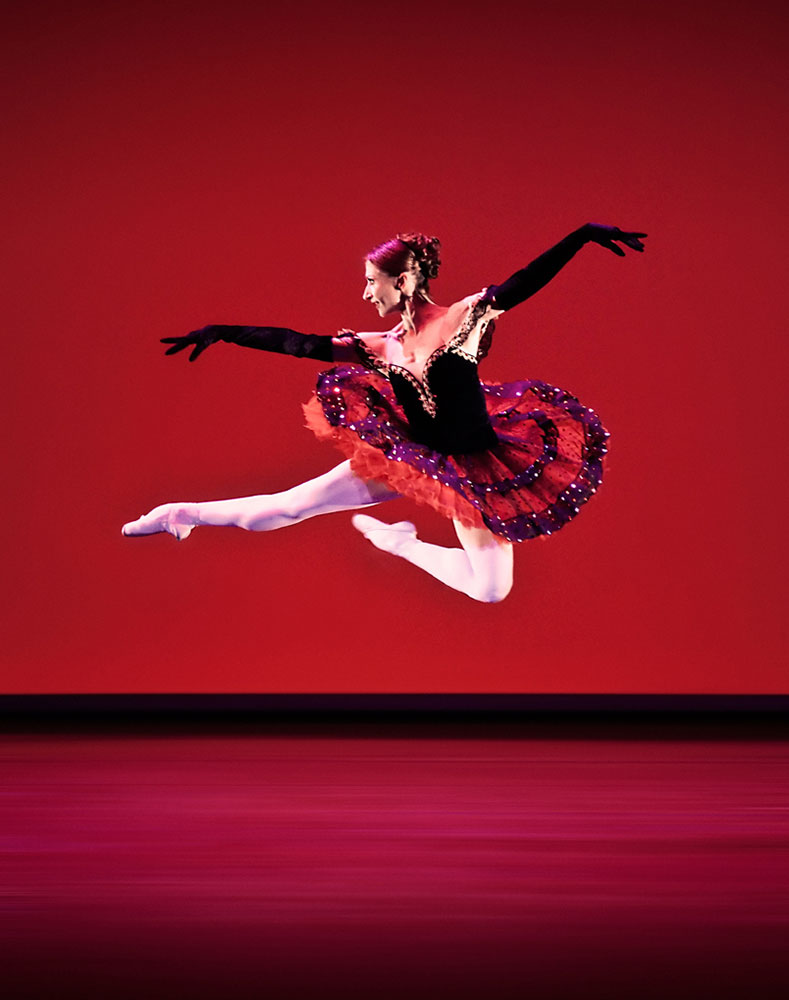
© Pavel Hejny. (Click image for larger version)
The book is straightforwardly written – it reads as though Daria were chatting directly to you. The text flows easily, if there is some repetition in this style and the odd grammatical foible. Of the 288 pages the final 43 are a ‘Danceography’ with lists of performances, partners, companies and glossary. Sadly there is no index but it does include eight pages of photographs — some taken by Daria, who is an avid photographer. She starts with a potted history of the Czech republic and her family history, and describes the difficulties of growing up under the Soviet umbrella, which meant she never got the Barbie doll she coveted and instead made do with imaginary friends like an umbrella which she dressed up, or even a carton of milk! She and her brother were not allowed pets, but she’d often bring home mangy, flea-ridden feral cats to be fed and loved for a few days before she was ordered to take them back. And she and her brother collected garden snails, which they ‘raced’, having painted numbers on their shells. (There is a nice follow-up on the penultimate page where she describes the home she owns today in the same Czech village, and the thought that she might, one day, come across some elderly snails with white paint on their backs!)

© Daria Klimentova. (Click image for larger version)
Her home life was somewhat turbulent with an often drunken father, who none-the-less was her greatest fan, a mother whose talent for dress making keeps English National Ballet dancers in uniquely knitted leg warmers today and an older brother, who teased and tormented her, stealing her secret store of chewing gum and prize money. The siblings never became close and he was tragically killed in a motor cycling accident when he was 35. Daria’s need for peace and quiet saw her spend much time with grandmother Ludmilla who loved to sleep – a pastime that Daria still endorses, claiming a need for nine hours sleep a night, as well as an afternoon nap.

© Metro Books. (Click image for larger version)
Like many other former Iron Curtain ballerinas such as Alina Cojocaru and Natalia Osipova, Daria started life as a gymnast. At the age of five, she was selected and thrust into four hours of training per day until she was ten years old. She excelled, becoming Czech junior champion, with the prospect of being groomed for the 1988 Olympics. She tells of her coach, Mrs Nekvasilova, who slapped her hard when, through weariness, she didn’t perform well on the bars. The event left more than a mark on her face; it resulted both in a fear of punishment and also the desire to try even harder always to do things correctly. Shortly after this episode she began her ballet training in earnest, and after the initial feelings of not fitting in with the other girls, she soon quietly rose to the top of the class, and stayed there. She joined the Czech National Ballet, where she was fast-tracked into soloist (principal) roles, aged 18. In 1991 she was invited to guest perform with the CAPAB Ballet company in Cape Town. A year later, she joined the company, where she danced for one year – also learning how to ride ostriches! She then set off to Scottish Ballet where she was challenged with not understanding the Glaswegian accent and having to suffer the penetrating cold. But it was here that she met and helped a young Spanish dancer who is now her boss, Tamara Rojo, recently appointed artistic director of English National Ballet, and who has written a glowing forward to this book.
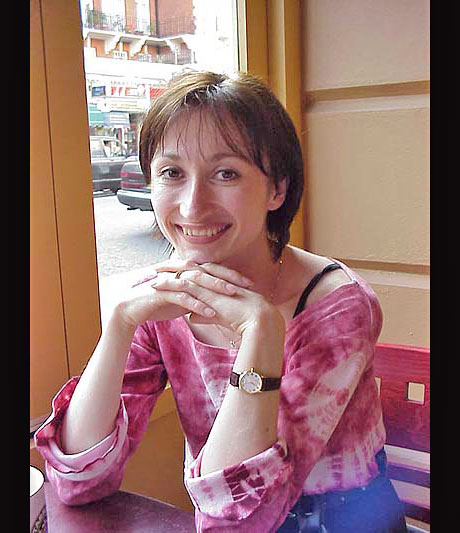
© Bruce Marriott.
After three years of life ‘over the border’, Daria decided to come south and auditioned for The Royal Ballet where she rejected a soloist contract – she had been a principal almost all of her dancing life. Instead she went to ENB and met the then director Derek Deane, who features largely in her book. She writes that she felt at the interview that ‘he was very business-like and important’ and that he would be ‘the director who would make me work’. She was right. The hard work in the studio ‘felt like being in an army camp’ and she soon got used to being yelled at in rehearsals, however unpleasant it was. Her marriage and subsequent pregnancy didn’t bode well with Deane either, since he had planned to cast her as Aurora in his new Sleeping Beauty in-the-round. His remark, ‘Are you going to keep it?’ when she told him she was pregnant, shocked her but she was able to perform the Lilac Fairy in his production, and was back in the studio a week after Sabina was born. Later, when the BBC produced Agony and Ecstasy – three documentaries of life at ENB filmed over one year – Daria again came into contact with Deane’s sharp tongue as he directed his version of Swan Lake in-the-round, which ‘made me feel less like a swan and more like a dead turkey ready to be plucked for Christmas dinner’. Daria was 39 and considering retirement and had been given this 20-year-old Russian boy, Vadim Muntagirov, to be her Prince, when his intended partner, Polina Semionova, failed to arrive due to visa problems. The film didn’t cut any of the horrendous scenes of bullying the leading couple and the constant commands to repeat despite the injuries sustained by overwork, and, though Daria had become used to Deane’s outbursts during his time as director, outsiders were appalled with one journalist stating that ‘It was humbling to watch the ballerina’s stoicism as she smiled sweetly though every onslaught.”
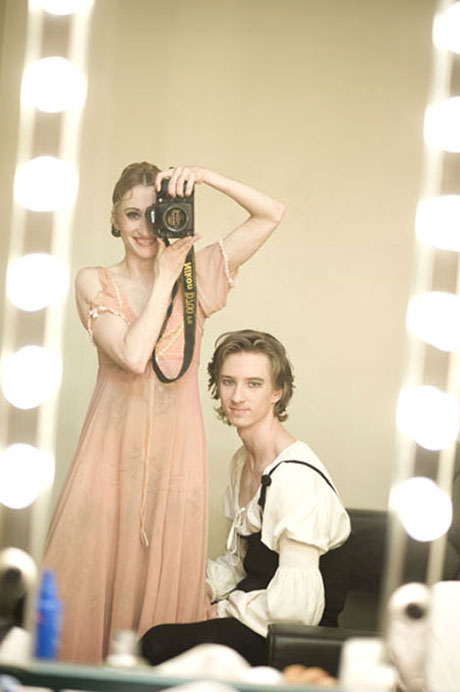
© Daria Klimentova.
Yet the Daria-Vadim partnership took off and they have become one of those legendary couples who not only complement each other’s dancing, but who make magic on stage together. Despite Vadim’s initial shyness and lack of self confidence, his beautiful line and elegant technique made him a ‘must-see’ dancer . Under Daria’s tutelage and experience, his assurance grew in leaps and bounds and today he is one of the few male dancers who is sought after by world class companies. Daria has had many dance partners – most of whom she has only praise for, though there is one she describes in detail with whom she did not get one – but today she and Vadim insist on performing together. She sums up her joy in working with him when she writes about performing the ballet Romeo and Juliet : ‘Vadim was the first partner to make me feel like I was 16, even though I was approaching 40 when we first danced together,’ and later, she firmly states that “I certainly now intend that he will be my final dance partner, and that I will carry on partnering him for as long as I can do so to the level that satisfies us both.’ Let’s hope that is for some considerable time yet.

April 2013 – dancing with James Streeter in Jiri Kylian’s Petite Mort.
© Dave Morgan. (Click image for larger version)











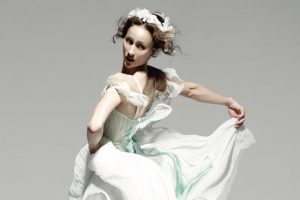

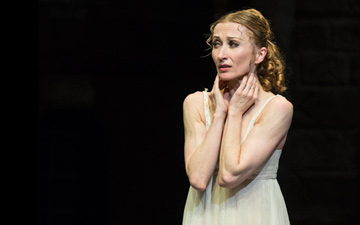

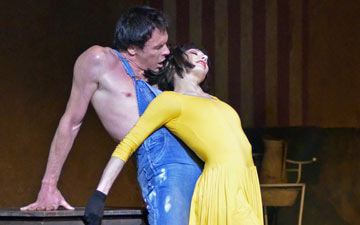
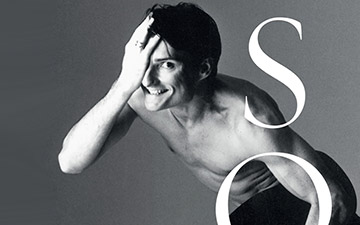
You must be logged in to post a comment.